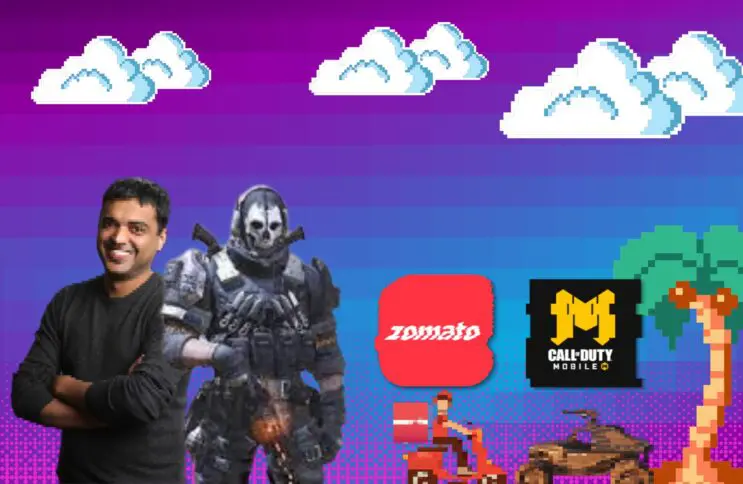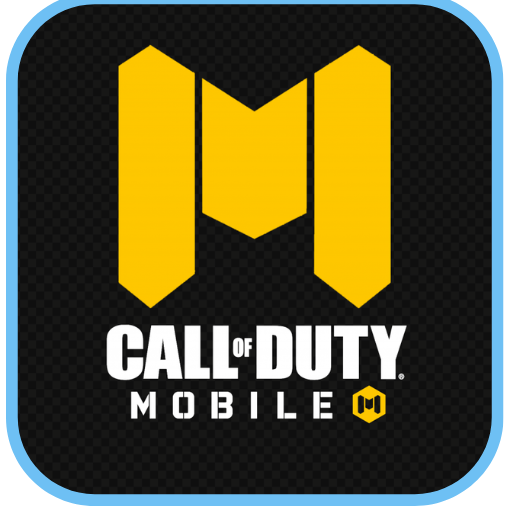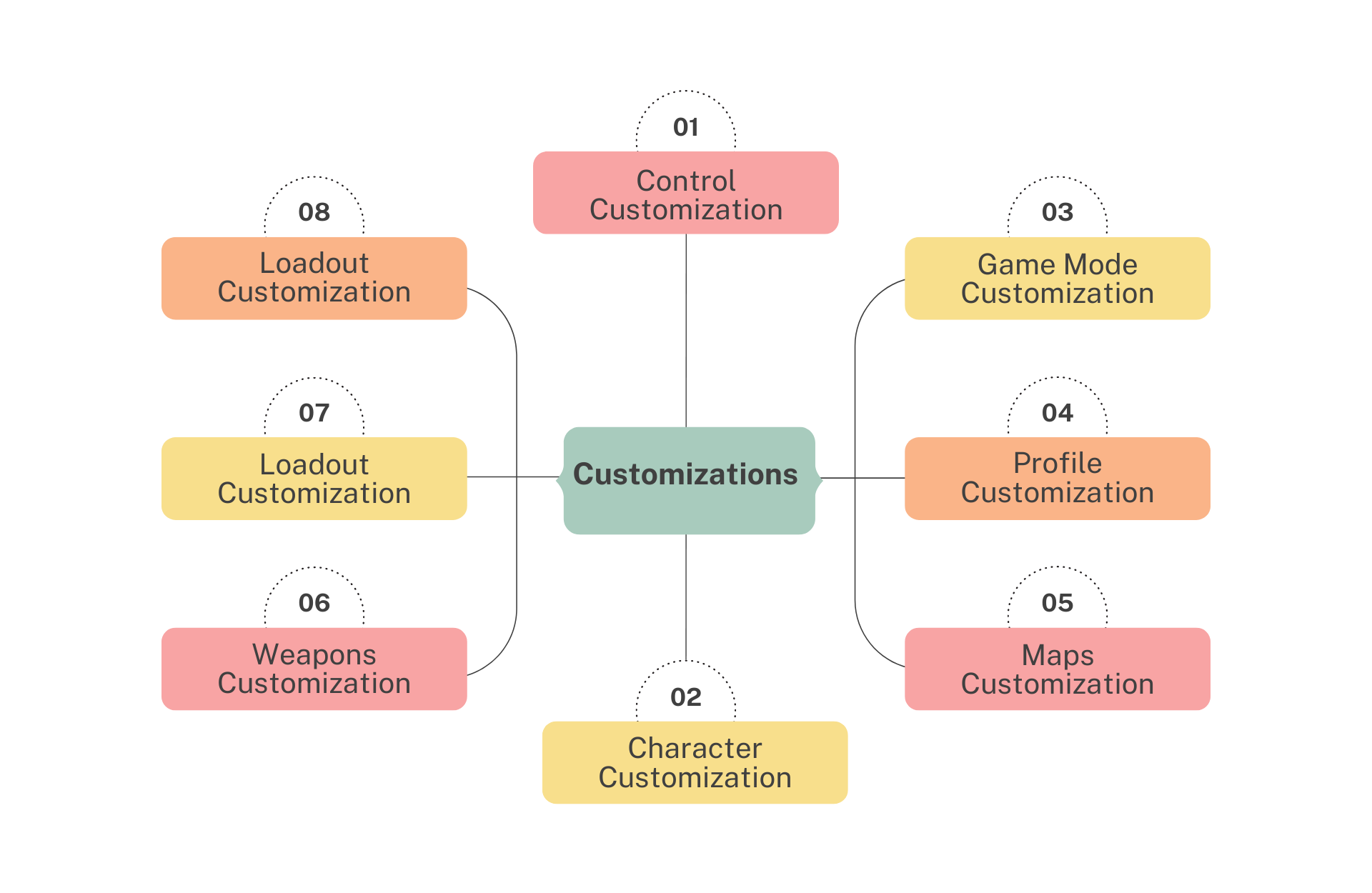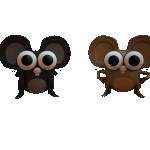Genuinely appreciate it if you went through Chapter 1. In this chapter, I intend to share my experience playing the game and understand why it’s extremely engaging.
To begin with, let’s quickly see the description of the 2 products we will be discussing at length.
But what is Gamification?
Simply put, gamification uses game-like elements in non-game contexts (i.e., Apps/Platforms, etc.) to engage and motivate users. It does not necessarily mean retention. Great Gamification models help you filter out users efficiently.
If you don’t play games, I am sure this will be difficult to understand. Many references/frameworks/models help you with the “gamification” of products/services. Unfortunately, there aren’t any which explain the dynamics of a game through its length and breadth.
To make it easier, I will explain Call Of Duty’s model and draw a parallel gamification model for Zomato based on CODM ( abbreviation for Call Of Duty Mobile). Why Zomato? Because that’s the app I use most ( other than CODM 😎)
Before we start with Gamification, let’s understand the basic Characteristics of games.
Characteristics of a game
There are primarily 4 components of a successful game. They are
Core Gameplay is basically what the game is about. In call of duty Mobile, the core gameplay is “killing” opponents. The core gameplay of Candy Crush is Tile-Matching, i.e., you match the tiles so that they disappear ( for Boomer like me, Tetris is a good comparison)
Character Progression is how your character grows as you play the game more. In Call of Duty Mobile, as you win the game more, you Rank higher and get access to more in-game items. You start as a beginner with 5 guns and a handful of other items. As you win more, you reach Legendary Rank and unlock many different firearms.
“Meta” is a prefix that means “above or beyond.” When you see the word “metagaming,” it is typically one of two meanings: either referring to secondary game elements outside the actual, tangible game itself or trying to gain an advantage by using outside information.
In CODM, for example, one of the metagaming elements would be upgrading your guns.
Well, as the name describes, it’s about personalizing the game through various customizations. In CODM, I can confidently say that no two players have the same interfaces if they have been playing for more than three months. Please keep in mind that at its Peak, the game had 100 million MAU.
Core Gameplay, Call of Duty Mobile: Explained
To understand the core gameplay of CODM, let’s look at the photo below.
As someone who had led & delivered a few large-scale projects, applying the Golden Circle Model to the core gameplay is fascinating
The “Why” and “How” almost always define the outcome of the game, that is, “What.” If you are playing a Game Mode where the winner is decided by how many “Flag” (“WHY”) a team collects, but the team is more focused on killing opponents (“HOW”) rather than Collecting flags, that team would probably lose ( WHAT)
Now that is out of the way, let’s look at the core gameplay of Zomato
Zomato Core Game-play
A core of a game is the one thing that game is about. The feature set is a list of the things you might see on the back of a game box or an ad for a game.
And by that definition, every product or service has core gaming characteristics. If you are Canva, your core gaming characteristics help users create designs. If you are Amazon, it is to connect buyers and sellers to enable commerce.
Amazon’s seller platform has the best gamification design I have ever seen on the topic of Amazon. I will do a separate post for it when I understand the model at least 70%-80%.
These are Zomato’s core gameplay characteristics.
- Ordering Food: That’s a no-brainer. And this is Zomato’s core gameplay with probably maximum user engagement.
- Booking Restaurant: Booking of a table at a restaurant.
- Ordering Grocery: With the acquisition of blinkit, it seems grocery delivery is exclusive to Blinkit App
- Restaurant Discovery: Find your favorite cuisine or dish.
To better understand Zomato’s Gaming Characteristics, let’s compare them to Call of Duty Mobile.
| Game Characteristics | CODM | Zomato |
|---|---|---|
| Core Gameplay | Kill Opponents | Order “stuff” |
| Character Progression | Legendary Rank | User Ratings? |
| Meta Gaming | Upgrading of guns/ perks/ Operators | Posting reviews/photos, following the account |
| Personalization | UI/UX/ Characters | None |
Perfect, Zomato’s game characteristics ( & Core Gaming characteristics ) should now be more relatable.
As explained earlier, every product or service has a Core Gameplay. They typically don’t have the rest of the gaming attributes & characteristics to create a gamification experience.
Hence, let’s expand on Meta Gaming, Character Progression and Personalisation attributes for Call of Duty Mobile.
We will then incorporate them within Zomato (hypothetically).
Meta Gaming: Call of Duty Mobile: Explained
Character Progression: Call of Duty Mobile: Explained
Personalization: Call of Duty Mobile: Explained
Every time a player wants to play a game, they must fill 8 assigned slots.
All the Slots mentioned above
The number denotes the variety of options within the game. For example, there are 100 guns. The player needs to select one in The Primary Weapon slot.
Let me provide 1 line explanations of non-obvious ones.
- Character: These are the avatars you play as.
- Tactical: These are items that can be used once / life ( example Smoke Grenade)
- Lethal: Almost similar to Tactical, an example would be an explosive grenade
- Operator Skills: Special powers can be activated 2-3 times in a match. For example, a grenade launcher.
- ScoreStreak: Special abilities you achieve when you kill and score “x” points without dying within a match. For example, you will be rewarded with a missile that will fall from the sky and kill enemies if you score 500 points without dying.
- Perks: These are characteristics of a player which remain throughout the match. For example, “Dead Silence” gives the ability to move within the game without footstep noise.
While the game has numerous Character Progression elements, not everything is unlocked when you start playing.
The more you play, the more items are unlocked ( You CANNOT BUY unlocks)
Only “Casual” matches are unlocked initially.
- The game matches you against bots and similar casual players to increase your chances of winning.
- It never feels like that, though. GodL Minho, one of the top players of Call of Duty Mobile in India, did not know he was playing against bots for the first 3 months.
- After a few obstacles, the hardcode Mode is unlocked, which is Ranked.
- In Ranked, all humans are battling for the top spot on the Leaderboard. The more matches you win, the higher you rank on Leaderboard.
- A small subset of all players is eligible/ play Rank. Even smaller reach Legendary.
- The Leaderboard is reset every 2 months.
- This section is pretty much self-explanatory from the image above. As I mentioned earlier, these micro customizations mean no 2 players who have played the game for a bit will have the same experience.
Let’s now work on Zomato gamification, shall we?
If you have followed me this far, you have a fair sense of how the Call of Duty Mobile Game Model works. As promised, I will create a Model for Zomato gamification. Let’s Go!!!!
As we create a gamification model for Zomato, there are a few essential things to remember if you plan to incorporate one within your product.
- Don't stop what's working: The gamification model is only for users/ customers who want to "compete". The gamification model should help you in filtering "casual" from "ranked" users. Therefore, there is no need to make the model for all users.
- It's Not a Game: Hence, a user's motivation won't be that of a game. The user expectation would be tangible. After all, we are working towards the gamification of a product, not turning the product into a game.
- User Expectation, business opportunity. To complete our gamification cycle, we need a leaderboard. A leaderboard that users want to be a part of.
- Customization: There are hundreds of studies that say the same thing. User sticks longer and engages more with products they can personalize. Firebase builds a complete solution to help Developers achieve it on the fly.
Core Game-play: Zomato (Extended)
You have already seen the Core Gameplay of Zomato. I am going to add 1 more Core Gameplay to Zomato. And that is social elements, primarily for 3 reasons.
- Food, as a category, has been in the Top 10 categories on Instagram for years. This is the lowest-hanging fruit for Zomato. I am surprised they haven’t done anything about it yet.
- The current Zomato workflow doesn’t have enough elements for gamification.
- It’s my blog. I can do whatever I want 😎
Meta Gaming Model: Zomato
Let’s closely look at the Meta Gaming Model of CODM and create a parallel experience for Zomato.
| Meta Gaming Component | Component Description |
|---|---|
| Homepage Categories (Primary Weapon) | – Let users decide which restaurants and categories they want to see on the homepage. – Let users decide the UI for the Menu Screen. – Users, based on Rank, unlock special formats to post content (i.e., Stories unlocked for certain Ranked Users) |
| App Layout ( Seconday Weapon) | Tabbed, hamburger, extra tabs. |
| Skins ( Characters) | Multiple UI skins ( different colours, different fonts) |
| Content Creation ( Tactical ) | Based on the level of user. If they are a beginner, they can create only “x” pieces of content in a day. |
| Content Engagement ( Lethal ) | Based on the level of user. If they are a beginner, they can engage with only “x” pieces of content daily. |
| ( Operator / Superpower ) | A small time frame-based activity which provides more “points.” For example, when the user receives a notification, they can create/engage with as much content as they want for a certain time duration. |
| Score Streak | If a user places X orders and Y days, he gets 100 points. If it’s X+1, they get 200 points, X+10, and “Z%” off on a dish. |
| Perks | Different abilities, for example, a user can remain anonymous, or they can create a pseudo name. |
This is awesome, but only if tied with something tangible, transparent, and competitive. There must be an achievement/accomplishment/empowerment system for gamification to work effectively. In other words, a progression-based leaderboard.
Please keep in mind that the points below are only suggestive. It’s impossible to give near-accurate points structure without the source data.
Character Progression Model: Zomato
Let’s create a point-based model where
- A user activity directly related to the product KPIs is rewarded.
- We then tie those rewards with Character Progression and Personalization.
Almost every product which tries to implement gamification ignores the 2nd step. When that happens, the end product is a "Rewards & Recognition" model, not gamification. That, in turn, leads to meta gaming becoming core gameplay (i.e., Buy X, get Y points). As soon as rewards are scaled back, the engagement starts to drop significantly.
With that in mind, let’s proceed with Progression Model.
| Activity | Points |
|---|---|
| App Launch ( For 1st Launch in a Day) | 2 Points |
| Create Content | 5 Points |
| Order Food | 50 Points |
| Order Grocery | 50 Points |
| Booked a Table | 100 Points |
| Engaged with Content | 2 / Engagement |
| Their content viewed | .01 Points |
| Their content engaged with | .05 Points |
| Streak ( based on a defined streak) | .5 to 25 points |
Excellent, so we have the Meta Gaming figured out and know the motivations for Character Progression. That’s half of the gamification of Zomato.
But we can’t stop here, can we? A user who works hard needs bragging rights. One of the last things left in the gamification of Zomato is the definition and abilities of Rank.
Character Progression: Zomato: Leaderboard
The Zomato gamification model described in the Article is only about 10%-15% of what the final outcome may look like. Describing the complete model is out of the scope of this article.
There are a lot of micro-functions that go into making a successful gamification-enabled Leaderboard. I will list a few of them.
- The Bragging Rights: If you are legendary, everyone needs to know
- It’s a Rank, not a commodity: The leaderboard loses its significance if every 3rd or 4th user is in the top Rank.
- Change is the only constant: The leaderboard needs to reset, at specific intervals, to give the “new” entrants a chance.
- Quality & Quantity: The leaderboard should reflect both the quality of a user’s contribution and the quantity of their contribution.
Personalization / Customization Model: Zomato
Well, as it turns out, we aren’t ready for it yet. For our exercise on Zomato gamification, personalization is the most important piece. I say that because Personalisation and customization, done right, will unlock a new revenue stream altogether.
Hence, we will need to cover Chapter 3 to completely understand the personalization Model of Call Of Duty & Zomato.
Conclusion
And this, ladies & gentlemen, brings us to a close for this topic. Having said that, the gamification of Zomato is not quite done yet. We shall look at a couple more aspects when we cover Call of Duty Monetization in Chapter 3
Here are some recommendations if you intend to incorporate gamification within your product.
- Gamification is expensive. There are no two ways about it. It’s a continuous stream of understanding your target user psychology and spending on developing game mechanics around that understanding.
- Gamification It’s binary: Unfortunately, it’s not feasible to implement gamification in batches. The core of gamification has to be ready from day 1. The customizations and options can be built with time, but not Meta-Gaming
Stay tuned for the Next Chapter/ Article, in which we shall discuss the monetization model of Call of Duty Mobile.










